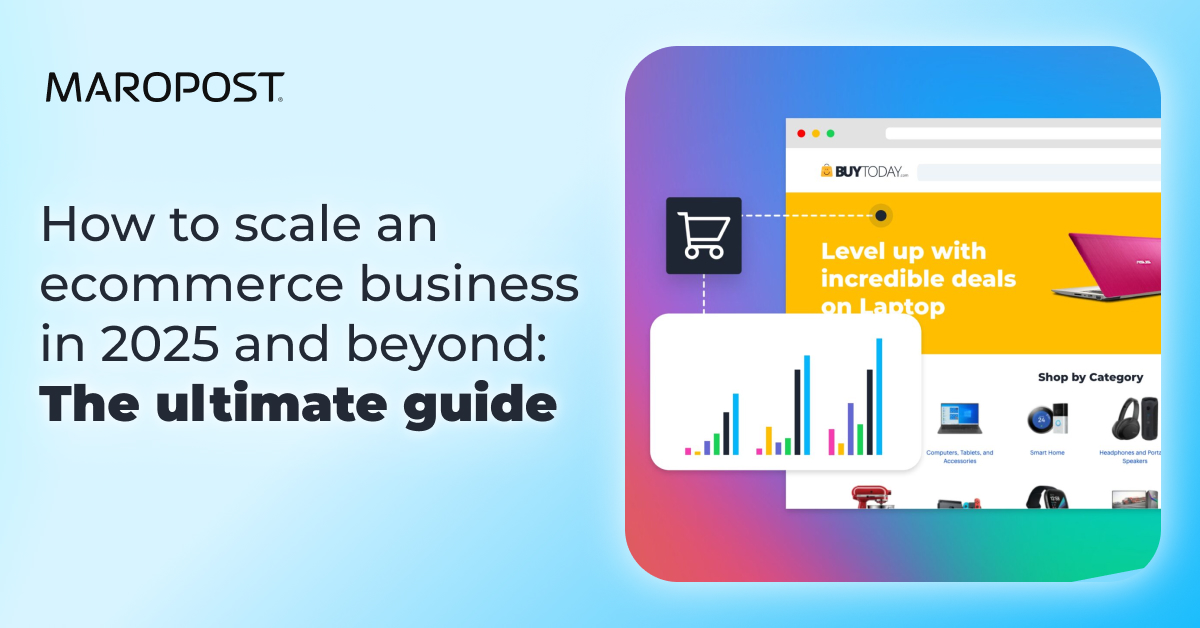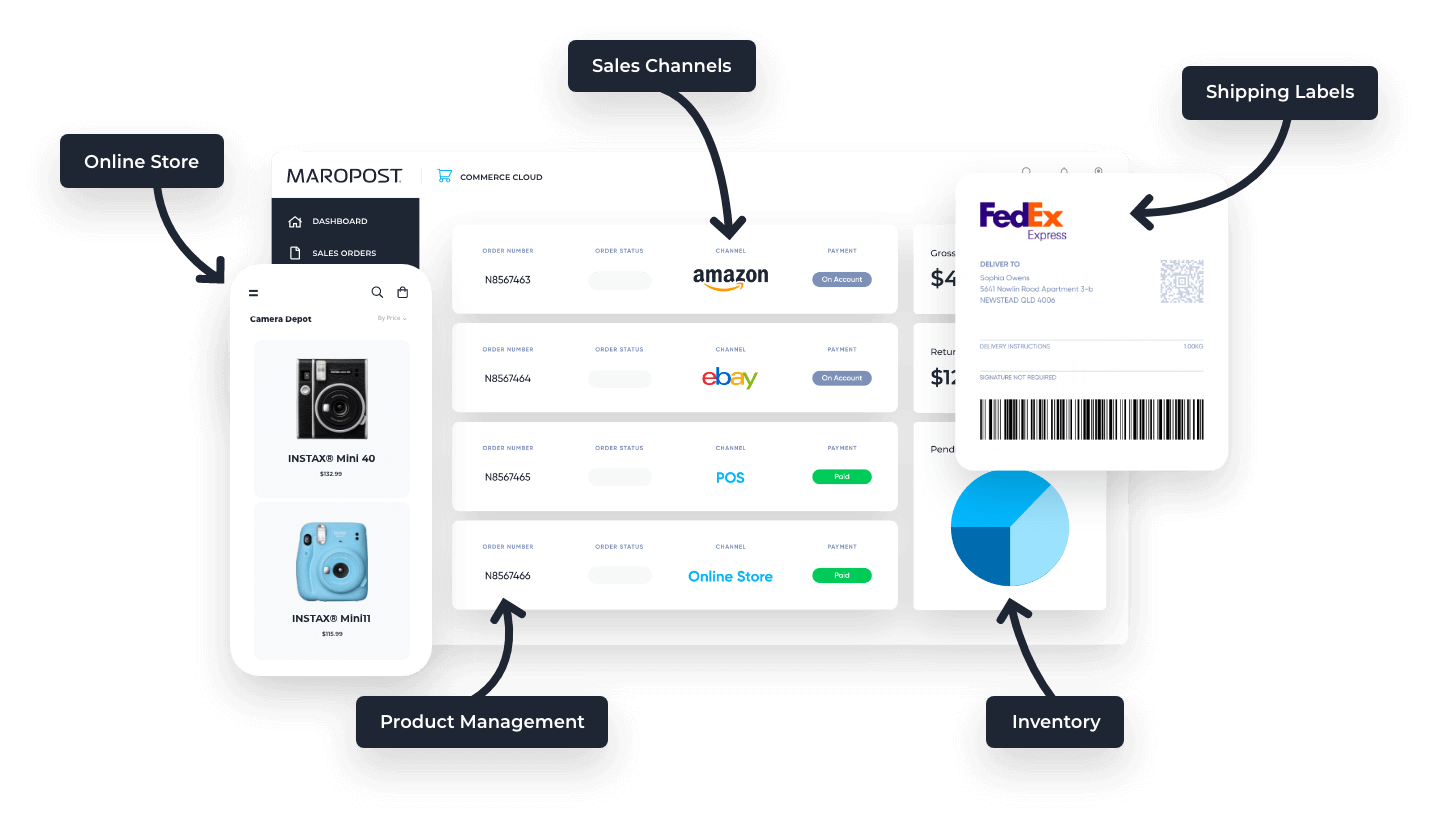Ecommerce continues to grow each year. In fact, by the third quarter of 2024, ecommerce sales accounted for $300B—that’s over 16% of all sales.
What do these numbers tell us? Online purchases aren’t slowing down anytime soon, and learning how to scale an ecommerce business has never been more critical.
- Scaling vs. growing your business
- How to scale your ecommerce business: Six effective tips
- Start scaling today
Scaling vs. growing your business
Most people confuse how to scale an online business with how to grow it. So, what’s the difference?
Growing a business refers to increased revenue due to using more resources, such as staff, capital investment, and product line. In this regard, the business grows in size but may not necessarily make profits.
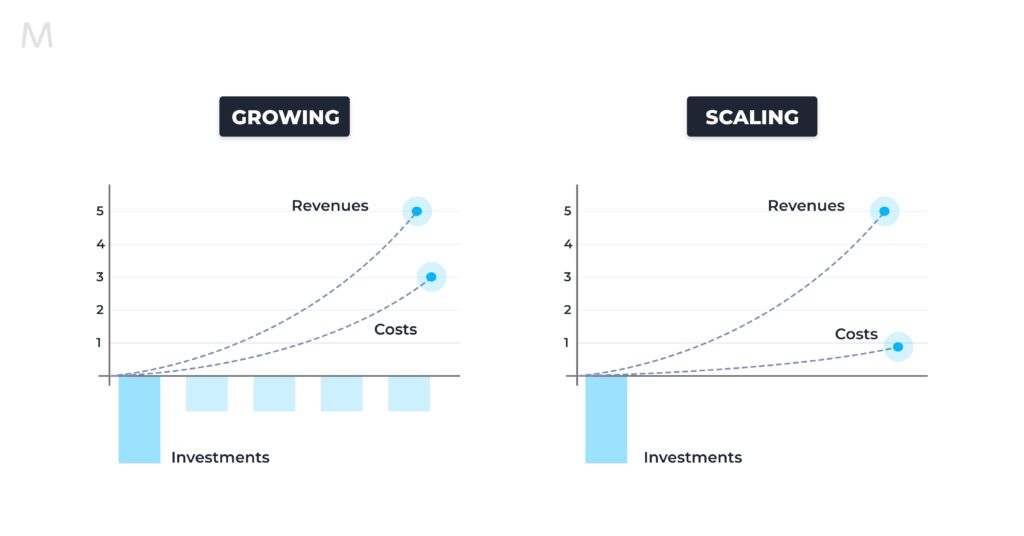
On the other hand, scaling refers to increasing revenue without a significant rise in costs. In other words, you increase revenue with the overhead staying nearly the same.
As an online store owner, a revenue increase is appealing, so scaling should be your goal.
How to scale your ecommerce business: 6 effective tips
To experience steady growth in your ecommerce business revenue with minimal resources, you should:
1. Implement automation
Scaling your business involves massive effort. It’s common to find yourself spending more time on specific tasks and leaving others untouched.
Automation is the future of ecommerce marketing; it comes in to help you reduce the amount of time and resources you typically spend on mundane activities. Automating tasks allows you to optimize resources and free up your time for other critical tasks such as creating a content strategy or marketing campaigns. At best, automation sets the stage for selling more.
You can use ecommerce platforms like Maropost to send automated welcome emails, discounts, surveys, abandoned carts, and re-engagement.
2. Offer free shipping
Free shipping is a significant factor for online shoppers deciding which store to purchase from. Most shoppers have a nose for free shipping and will go to any length to get it.
A Baymard Institute study shows that the primary reason why most (49% of) customers may abandon an online purchase is the unforeseen shipping costs, tax, and other fees.
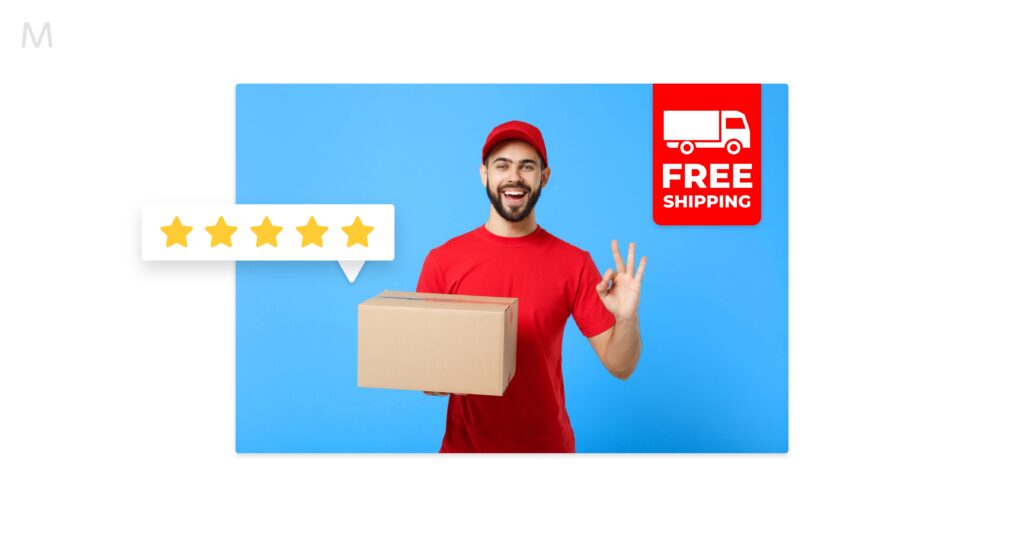
Here’s the thing: don’t wait to inform customers about shipping costs and other fees afterward. Incorporate the information within the product description.Also, consider offering free shipping to help minimize cart abandonment.
More importantly, ensure the product arrives on time. 19% of customers cite slow delivery as their motivation for abandoning the cart.
3. Make the website fast and navigable
Have you ever visited a site and spent too much time looking for specific product? What did you do after realizing the website is clunky, and you couldn’t find the product with ease?
Here’s the deal: a good site won’t necessarily skyrocket sales, but a lousy site will likely plummet sales. If you’ve worked hard to market the website and its products a poorly designed site may hinder your hungry traffic from making a purchase.
You can change that by using page builders like Elementor to create fast-loading and beautiful product pages with clear call-to-action buttons that attract the visitors’ attention.
4. Amp up your customer service experience
Customer service is a major building block when looking at how to scale up a business. Outstanding customer experience may make customers purchase more from the company, recommend you to others, forgive a previous experience, and trust your brand.
Poor customer service is among the enormous contributors of customer churn, and as an ecommerce business owner, you want to prioritize retention.
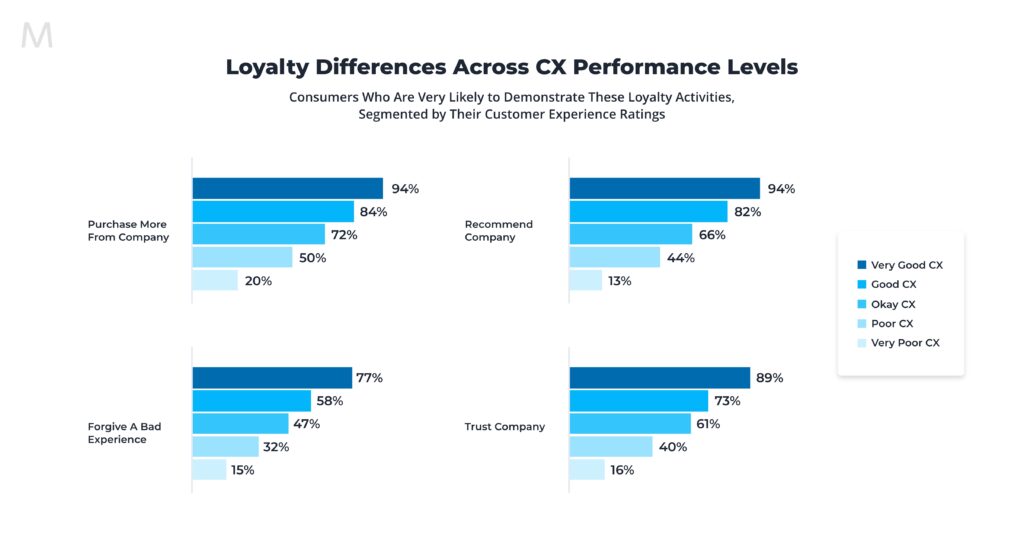
How do you improve your customer service game? Here are some tips:
- Create FAQs page
- Offer live chat
- Create a knowledge base page
- Offer phone support (24 hours)
- Use customer satisfaction surveys
- Respond promptly
- Don’t let customers repeat themselves
- Build your social media presence and engage with customers on social media
Plus, don’t forget to create a referral program. According to a study from 2018, about 83% of Americans say “a word-mouth of recommendation” from friends or a family makes them discuss and purchase products.
With referral programs, you can attract more customers to your business through personal recommendations. It’s one of the most effective marketing tactics that helps all sorts of businesses every single day.
5. Communicate value in the product copy
Often, if a product isn’t selling well, it isn’t because it’s terrible. It’s possibly because the customer doesn’t understand how your product will help them.
That’s why when building an online store you should communicate the product value at every place the products appear. And an excellent place to start is the product descriptions.
Choose products that help solve customers’ problems and showcase that. You should see a rise in conversion and sales.
6. Collect reviews and display them
We can’t discuss how to scale a business online without touching on reviews. A survey by Bizrate Insights shows that a high rating or review score is one of the major determinants of whether customers will purchase a product. Additionally, most customers read up to 10 reviews before making a purchase.
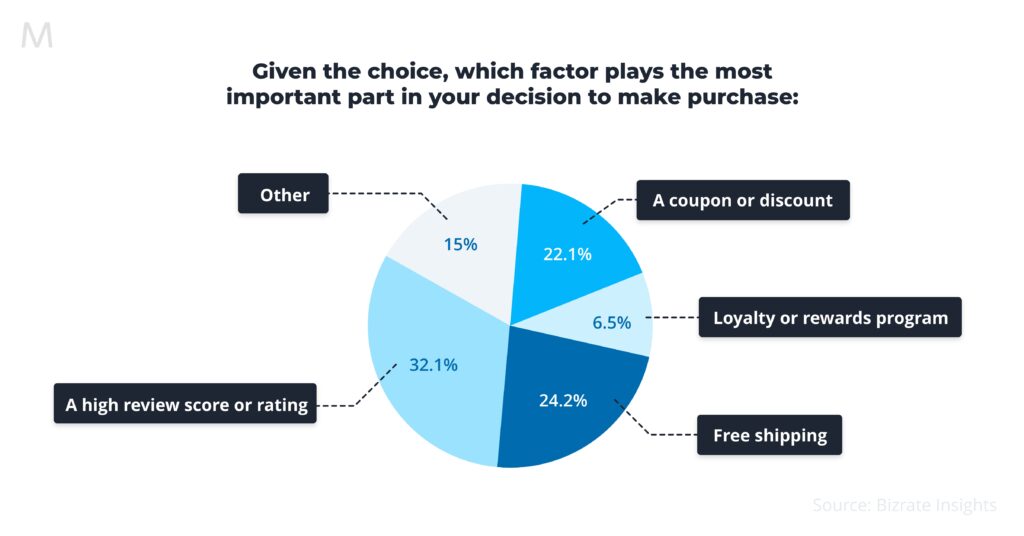
Other than influencing the customers’ purchasing decision, reviews also:
- Increase consumer trust: Most consumers are more likely to buy from you after reading trusted reviews.
- Increase CTRs (click-through rates): When a customer is on the fence about making a purchase, several high-quality reviews might push them over the edge, allowing you to drive more sales.
- Help you improve customer experience: Customer feedback provides insights to level up the customer experience. You get a picture of the customer journey, discover your strengths and areas that need improvement.
- Boost search engine rankings: Responding to reviews shows Google that you value customers and opinions. As a result, the search engine rewards high-quality and positive customer feedback with improved search engine visibility.
While we all want those glowing positive reviews, a typical business often attracts a few negative reviews. The latter teaches you how to value an ecommerce business by making everything right with the reviewer, and demonstrating your ability to care about customers and your products.
Encourage customers to leave valuable and detailed reviews on platforms like Yelp, as this site may filter and remove reviews that seem fake or unreliable.
Where to display reviews
Now that you know how important reviews are, how should you display them? Here are several ways:
- Share them on social media (find out if it’s legal to do this in your location)
- Include them in paid ads
- Add them to product pages’ meta descriptions
- Feature them in your email marketing campaigns
- Mention them in videos
- Showcase them through badges
7. Master hyper-segmentation with eRFM reporting
Scaling your ecommerce business requires delivering the right message to the right customer at the right time. That’s where eRFM segmentation (Engagement, Recency, Frequency, Monetary) comes in. By analyzing customer behavior, eRFM allows you to identify your most valuable customers, those at risk of churning, and even re-engagement opportunities. With this data-driven approach, you can craft personalized email campaigns, exclusive offers, and product recommendations that resonate with each segment. The result? Increased customer retention, higher average order value, and better ROI on your marketing efforts. Implementing tools that support advanced segmentation empowers you to scale efficiently while fostering deeper customer connections.
Start scaling today
Learning how to scale an ecommerce business can put you ahead of the competition. As you can see, it’s possible to grow by driving sales without a substantial increase in overhead. Get started today by implementing these tips to take your business to the next level.
Need to chat about your ecommerce marketing strategy?
More than 10,000 marketers use Maropost to engage with their prospects and customers through emails, SMS, social media and more. We’re here to help you grow your business!
Chat Now
